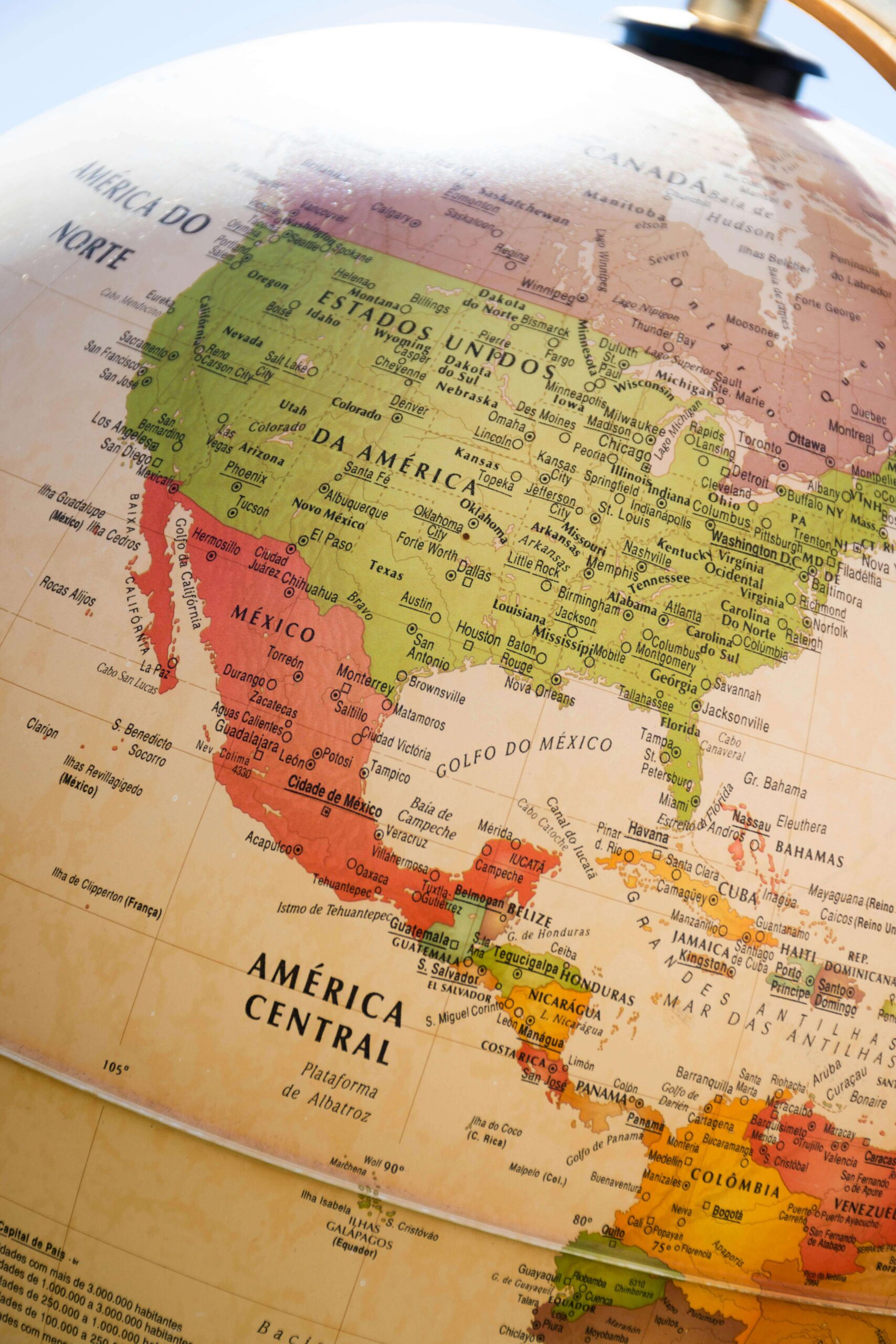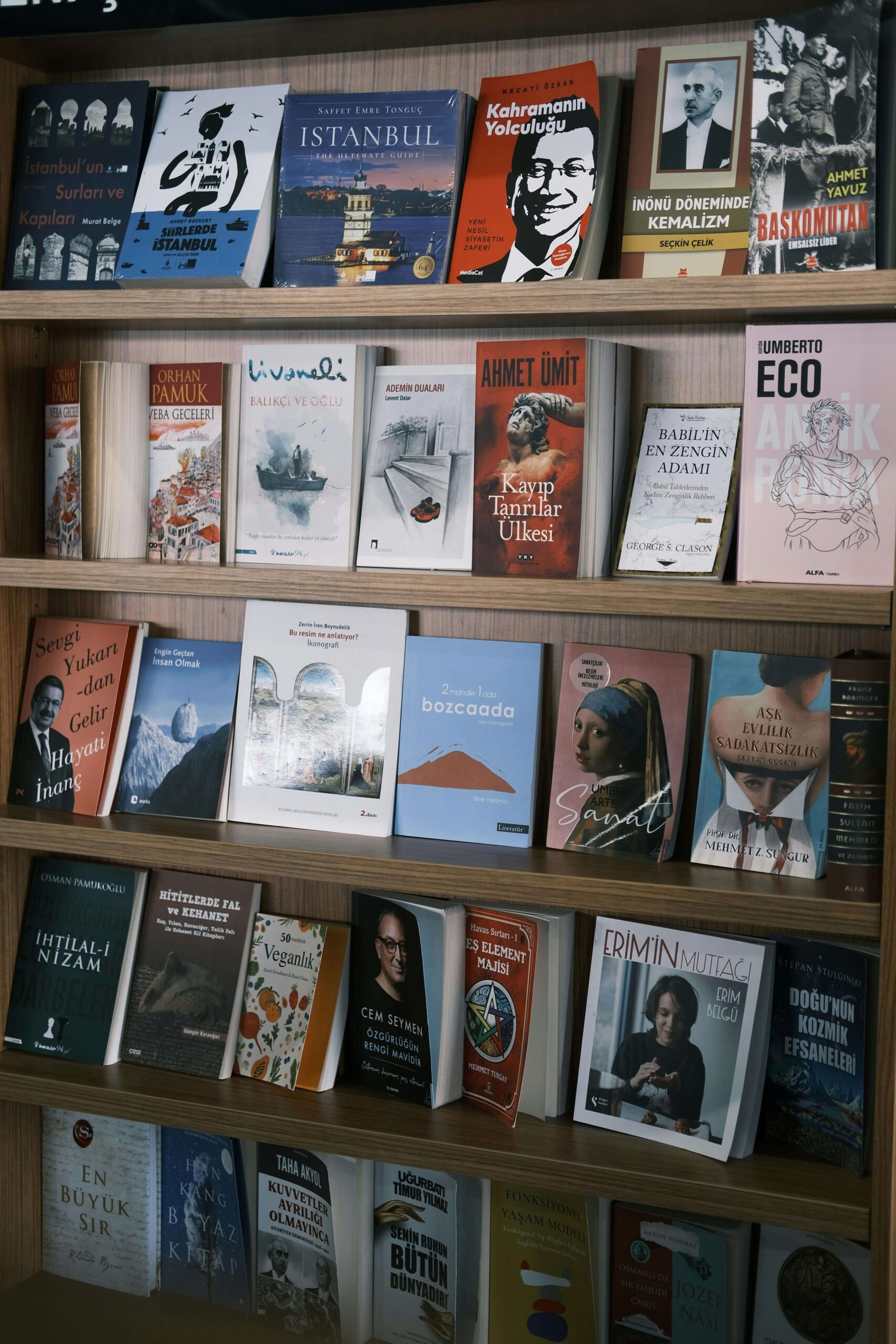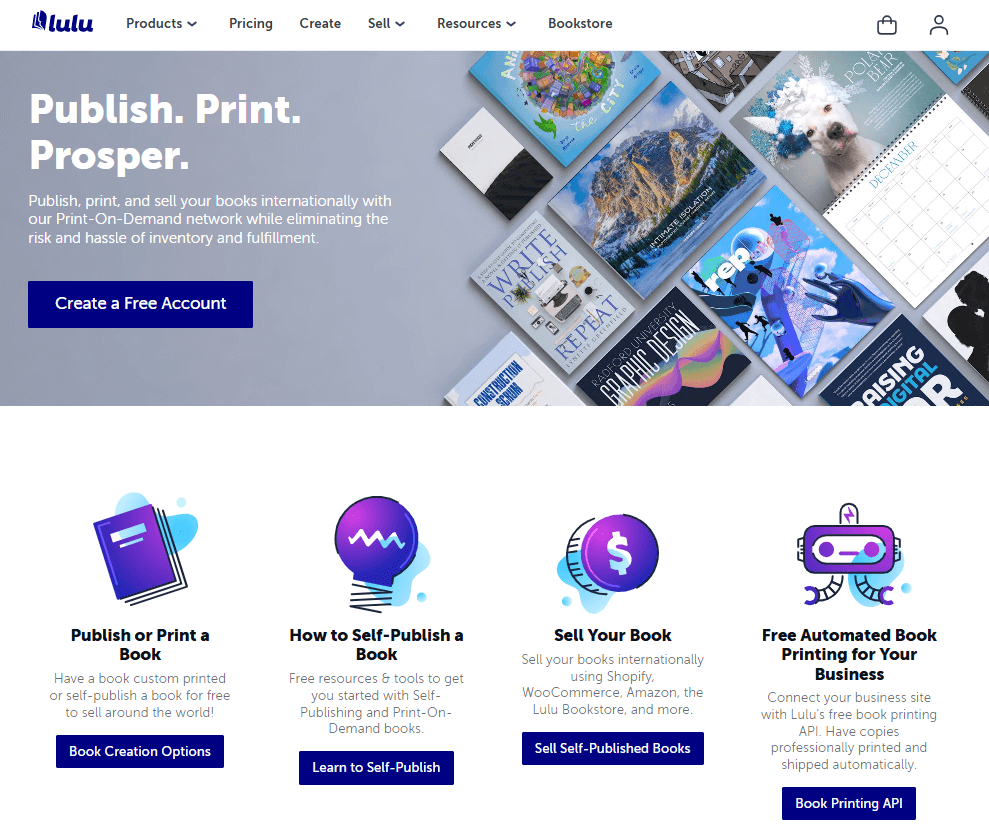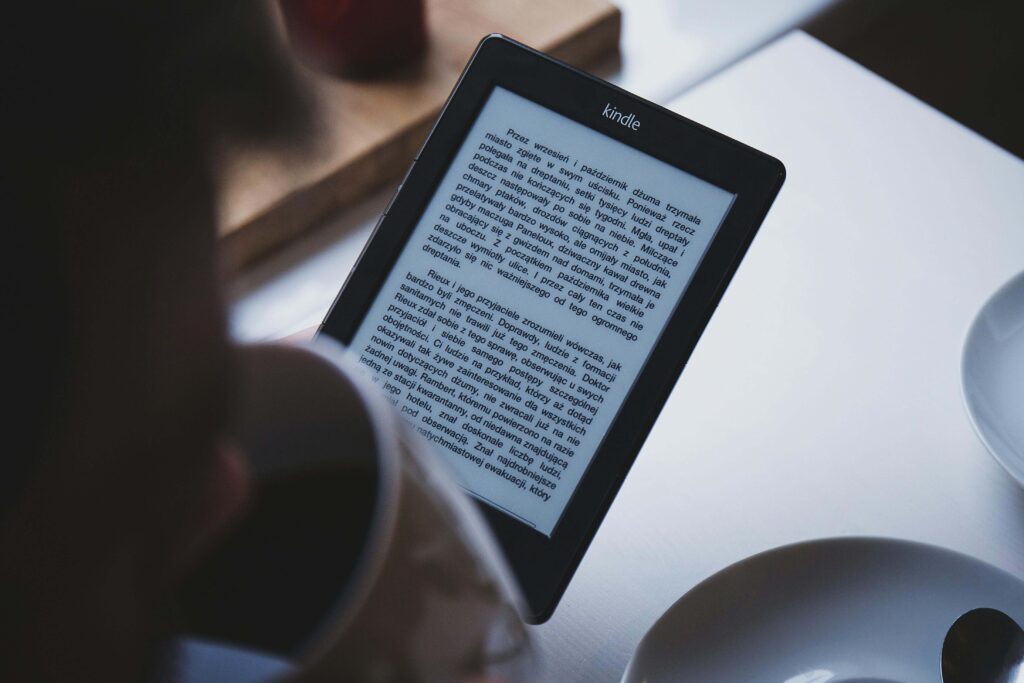
Publishing a book used to mean taking big financial risks. You had to commit to printing hundreds or even thousands of copies upfront, then hope your book sold fast enough to avoid collecting dust or debt.
Warehousing fees, returns from bookstores, and shipping logistics could drain your budget before you sold your first ten copies. And the hardest part? You had to wait for a publisher or agent to approve your work before it ever saw daylight.
Amazon print on demand has flipped that script. You can now publish a paperback or hardcover from your laptop and have it available worldwide in just a few clicks. There’s no inventory to manage, no upfront printing costs, and no need to beg for shelf space.
Once your book is live, Amazon prints a fresh copy every time someone places an order. That’s real-time publishing.
This model has made it possible for thousands of self-published authors to earn passive income, test new ideas, and build loyal readerships without depending on traditional gatekeepers. You’re in charge of your pricing, your cover, your content, and your launch schedule.
I’ve personally used Amazon print on demand for multiple books and saw sales trickle in from readers in the U.S., Canada, the U.K., and even Australia, all without spending a cent on bulk printing or storage.
In a world where attention spans are short and trends move fast, Amazon print on demand gives you the speed and reach you need to stay relevant.
Whether you’re publishing a novel, a journal, or a business guide, you can have your book in a customer’s hands in a matter of days. And for authors who’ve waited years to break through, that kind of control can be everything.
What Is Amazon Print on Demand?
Amazon print on demand is a service offered through Kindle Direct Publishing (KDP) that lets you publish physical copies of your book without ever printing a single copy upfront. Your book is printed only when someone places an order.
That means no inventory, no minimums, and no shipping stress. The printed book is sent directly to the customer, whether they’re in the U.S. or on the other side of the globe.
Think of it like having your own virtual printing press that wakes up the moment someone clicks “Buy Now.”
You don’t need to guess how many books to print, pay for a storage unit, or worry about boxes of unsold copies sitting in your garage. Everything runs on demand, which means you only pay for what’s printed, and only when a reader wants it.
You’re no longer at the mercy of gatekeepers or outdated publishing cycles.
According to Amazon, millions of paperback books are printed every month through KDP. That’s a sign that self-publishing is no longer a backup plan.
With the click of a button, your manuscript can become a tangible product in Amazon’s global store, ready to be shipped to a reader in Tokyo, Toronto, or Texas.
From my own experience, seeing my book listed on Amazon alongside traditionally published titles was surreal. It looked professional, felt professional, and best of all, I didn’t have to spend a fortune to get it there.
With Amazon print on demand, you’re building a direct bridge between your work and the reader. No warehouses, no middlemen, no waitlists.
How Amazon Print on Demand Works (Step-by-Step)
You’ll start by creating a free account on Kindle Direct Publishing. The sign-up process is quick and requires only a few basic details. No special credentials. No upfront fees.
Once you’re in, the KDP dashboard becomes your personal publishing control center. You’ll see tabs for paperback and hardcover formats, royalty settings, marketing tools, and book tracking. Everything is laid out clearly, even for first-time authors.
Uploading your manuscript is where things start to feel real. You can work with a clean, formatted Word file or use Kindle Create to polish your layout.
Personally, I’ve found tools like Vellum (for Mac users) or Atticus (for both Mac and PC) to be lifesavers. They help streamline margins, headings, and page numbers without the stress of coding or design experience.
For your cover, you can upload a print-ready PDF or use Amazon’s free cover creator if you’re just getting started. Either way, the platform guides you through each step so nothing gets missed.
Next, you’ll customize the physical specs of your book. Trim size determines the dimensions (like 6×9 or 5×8), and you’ll choose between cream or white paper.
Ink type depends on whether your book is black-and-white (which is more affordable) or full-color (ideal for children’s books, workbooks, or anything visual).
Amazon currently supports both paperback and hardcover formats, but not spiral binding or specialty finishes. So while it’s professional-grade, the choices are streamlined for speed and affordability.
Once you’ve finalized the book’s details, you’ll set your list price. Amazon provides a royalty calculator so you can instantly see your earnings based on page count, region, and price.
It’s one of the most transparent setups I’ve seen, and you’ll be able to list your book in multiple Amazon marketplaces, including the U.S., Canada, U.K., Australia, and more.

Hitting publish is the moment of truth. After a quick review period (usually under 72 hours), your book goes live. It gets an Amazon product page, customer reviews section, and an official listing in the world’s largest online bookstore.
Every time someone clicks “Buy Now,” Amazon prints one copy, packages it, and ships it directly to the customer. You never have to touch a box, track a parcel, or process a single order yourself.
There’s something surreal about seeing your book available worldwide without owning a single printed copy yourself. It feels like publishing went from climbing a mountain to flipping a switch.
How It Helps Self-Published Authors
Amazon print on demand levels the playing field. You no longer need to risk your savings to get your work into the hands of readers. The days of printing hundreds of copies upfront or dealing with shady vanity presses are over.
You can publish your book on your own terms, professionally and globally, without needing a publishing contract or a warehouse full of unsold paperbacks.
There’s real power in being able to upload a file from your computer and have that same file delivered as a printed, bound book to someone in Berlin or Brisbane a few days later.
When I published my first paperback using Amazon print on demand, I had zero name recognition, no ads running, and only a small social media presence. But somehow, orders came in from places I never thought I’d reach.
That kind of reach would have been unthinkable without paying upfront for global distribution or partnering with a traditional publisher.
You earn up to 60% of the list price, minus the printing cost, which is calculated based on page count, format, and ink type. To give you an idea, a standard 200-page black-and-white paperback that you price at $12.99 will typically earn you between $4 and $5 per sale.
For a self-published author who’s managing everything solo, that’s a solid return, especially since you don’t pay anything to print the book unless someone orders it.
There’s also flexibility built into the system. Made a typo? Want to update your author bio or change the back cover design? You can upload a new version of your manuscript or cover at any time.
There’s no need to scrap a whole print run or absorb the cost of outdated copies. You’re not locked into anything, and that kind of control gives you room to grow and improve without financial setbacks.
This model allows you to publish smarter. You can test different genres, target niche audiences, or even launch companion workbooks or journals with very little risk.
And when something works, you can double down knowing that your fulfillment system scales automatically. That’s a major advantage.
How Long Does It Take to Get a Printed Book?
Once your book is live on Amazon, the print-on-demand process kicks in fast. Most readers in the U.S. receive their copies within 3 to 5 business days. Amazon uses a network of regional print facilities across North America and Europe, so books don’t have to travel far.
That reduces wait times and shipping costs for customers, and it makes your book feel like it’s always in stock.
This system works behind the scenes, but it’s surprisingly efficient. A reader in New York and another in Berlin could both place an order at the same time and receive their printed books within days, thanks to Amazon’s localized printing hubs.
It’s the kind of setup you’d expect from a major publisher, but self-published authors benefit from the same logistics without paying extra.
There’s real power in being able to upload a file from your computer and have that same file delivered as a printed, bound book to someone in Berlin or Brisbane.
Before making your book available to the public, it’s smart to order a proof copy. This is your chance to see exactly how your book will look in print—cover, trim size, paper quality, binding, and all.
My first proof copy arrived in about five days, and I caught a few formatting issues I missed on the screen. Fixing them before launch saved me from awkward reviews and reader complaints.
You can also order author copies at print cost, which is perfect for live events, book signings, or giveaways. These typically take a little longer to ship, around 7 to 10 business days depending on your location, but the savings are worth the wait.
You only pay the printing fee and shipping, which means you can stock up affordably when preparing for a local launch or speaking gig.
Turnaround time may vary based on volume and geography, but for the most part, the print-on-demand process with Amazon is fast, reliable, and built for scale.
You won’t have to chase down printers, manage delivery logistics, or worry about keeping books in stock. That gives you more time to write, promote, and connect with readers.
The Catch: What You Should Watch Out For
Amazon’s print-on-demand service is designed for convenience, but that simplicity comes with trade-offs. You’ll have to work within a fairly rigid framework when it comes to print specs.
Custom design flourishes like foil stamping, spot gloss, textured paper, or embossed lettering aren’t supported. If your book relies heavily on visual presentation, say, a coffee table book or a collector’s edition, Amazon print on demand might fall short of your vision.
The selection of trim sizes, binding types, and paper stock is practical but limited. You can choose between cream or white interior paper and either paperback or hardcover, but you can’t mix things up beyond that.
For most self-published novels, workbooks, or nonfiction guides, these options are enough. But for creative projects that need a tactile or premium finish, you’ll find yourself boxed in.
Another key limitation is access to your readers. When someone buys your book through Amazon, you get the sale, but not the relationship. You can’t see who purchased your book, can’t email them directly, and can’t build a customer list from your sales.
That’s valuable data you’ll never touch unless your reader independently connects with you through your website or social media. It’s a walled-off experience. I’ve had readers tag me on Instagram after buying my book, but that happened organically, not because Amazon made it easy to follow up.
Print quality, while good overall, isn’t always perfect. I’ve seen complaints, and experienced it myself, about things like covers printing too dark, alignment issues, or unexpected shifts in margins.
These problems don’t happen every time, but they do happen. That’s why ordering a proof copy isn’t optional. It’s a necessary step. It’s your one chance to catch any quirks before your book reaches paying readers.
Amazon print on demand offers a solid foundation, especially for first-time authors. But it’s not a precision tool for high-end projects, and it’s not built for authors who want full marketing control. Knowing what you’re working with helps you avoid surprises and plan smarter.

Pros and Cons of Amazon Print on Demand
Amazon print on demand offers a mix of freedom and limitations that every self-published author should understand before jumping in.
On the plus side, one of the biggest advantages is that there are no upfront costs. You can upload your manuscript, format your layout, and publish your book without spending a dime. That makes it low-risk, especially for new authors or anyone testing a new niche or idea.
For writers who’ve been sitting on a manuscript for years because of budget concerns, this setup removes the most common barrier.
Another huge benefit is global distribution through Amazon. Your book appears in multiple Amazon marketplaces automatically, giving you visibility in the U.S., Canada, U.K., Germany, and beyond.
You’re not confined to local sales or regional shipping. The reach you get right out of the gate is something many traditional small presses can’t even offer without added distribution fees.
Amazon also makes it incredibly easy to update your book. You can swap out the cover, fix typos, or change pricing at any time. I’ve gone back to tweak a subtitle after launch, and the changes reflected within 72 hours.
That kind of flexibility helps you stay responsive to reader feedback or market trends, without needing to scrap or reprint anything.
Publishing speed is another strong point. Once your files are uploaded and approved, your book can be live within a day or two.
Compared to the traditional route, where timelines stretch into months or even years, this instant availability lets you keep momentum. You can go from final draft to live listing in a single weekend.
But there are trade-offs. Customization options are limited. You won’t be able to add design extras or select from a wide variety of paper types. That might be fine for a novel or guidebook, but it’s less than ideal for art books or premium projects where tactile experience matters.
The lack of access to customer data is another major limitation. You can’t see who’s buying your book, so it’s harder to build a direct relationship with your readers. For long-term business growth or email list building, that’s a big gap.
Profit margins can also be tight, especially for longer books or color interiors. Amazon takes a portion of every sale, and the cost of printing is deducted before you receive your royalty.
You’ll still earn more than many traditionally published authors per copy, but not as much as you could through offset printing at scale.
Lastly, there are occasional print quality issues. Most orders come out fine, but I’ve had readers report slight printing errors or alignment problems. It’s rare, but it happens. Always review your proof copy to catch any deal-breaking flaws before launch.
Overall, Amazon print on demand makes publishing faster, easier, and more accessible. Just go in with clear expectations so you can leverage the benefits, and work around the limitations.
How It Compares to Traditional Publishing
Traditional publishing offers prestige and polish, but that polish comes with a waitlist and a compromise. Securing a book deal usually involves querying agents, navigating rejection, and hoping a publisher sees potential in your manuscript.
That process alone can take months or years. And when the offer finally arrives, the contract often comes with strings: limited creative input, loss of certain rights, and royalty rates that rarely go beyond 15%.
Publishing through Amazon print on demand skips the gatekeepers. You don’t have to pitch your book in a hundred emails hoping someone finally says yes.
You say yes to yourself. You control your book’s layout, tone, title, cover, pricing—everything. No committee gets to dilute your message or repurpose your story to fit a market trend.
Every time someone clicks “Buy Now,” Amazon prints one copy, packages it, and ships it directly to the customer.
Royalties are significantly better. With KDP, you can earn up to 60% of the list price on paperbacks, minus print costs. That means you could potentially earn $4–$5 per book on a $12.99 paperback, far more than the $1–$2 many traditionally published authors take home.
And you don’t have to wait six months for a royalty check; Amazon pays monthly, which gives you real cash flow to reinvest in ads, covers, or your next book.
The timeline is another clear win. Publishing through Amazon print on demand takes days. Upload today, and your book could be live on Amazon by the weekend.
That’s powerful when you’ve just finished a time-sensitive memoir or want to ride the wave of a trending topic. Traditional publishers, on the other hand, often need a year or more between final edits and launch day.
Marketing still falls on your shoulders either way. Most traditionally published authors are now expected to grow their platforms, schedule their own podcast interviews, and maintain an active online presence.
Having a publisher doesn’t guarantee built-in buzz. So if you’re doing the heavy lifting already, you might as well keep more control and a larger cut of the profits.
Amazon print on demand shifts the dynamic. You’re not a passive participant waiting to be chosen. You’re the publisher, the creative director, and the business owner. That’s a role more and more writers are stepping into with confidence and results.
Alternatives to Amazon Print on Demand
Amazon print on demand is a great starting point, but it’s not your only option. Several other platforms offer print on demand for authors, and each one serves a slightly different purpose depending on your goals, budget, and type of book.
IngramSpark stands out for authors who want to get into brick-and-mortar bookstores or public libraries. Unlike Amazon, which mainly sells within its own ecosystem, IngramSpark distributes through a vast global network, including independent bookstores, Barnes & Noble, and academic libraries.
That kind of reach opens doors Amazon can’t, especially for authors aiming to build local or institutional visibility. The catch? There’s a setup fee for each format, and you’ll need to supply your own ISBN. But for many, the broader access is worth the upfront cost.
Lulu is known for its flexibility. You can publish everything from novels and workbooks to calendars, comic books, and spiral-bound manuals. The interface is user-friendly, and it offers direct sales through the Lulu bookstore and your own website.
This makes it especially attractive for creators who want niche products with more custom specs. The downside? Lulu doesn’t offer the same built-in audience or traffic as Amazon, so discoverability can be a challenge unless you already have an existing following.
Blurb is tailor-made for visually driven books. Think photography books, art portfolios, and premium lifestyle publications. Blurb allows for high-quality image reproduction and lets you create both print and digital editions.
I once used Blurb for a client project that involved full-color spreads, and the print clarity was excellent. That level of quality matters when presentation is everything.
BookBaby offers more of a concierge experience. You get bundled services like editing, design, formatting, and distribution in one place.
It’s perfect for authors who want guidance or a done-for-you package without chasing different freelancers or learning new tools. BookBaby also gives you access to bookstore distribution, but expect to pay upfront for most services.
Each of these print-on-demand platforms has its own strengths. IngramSpark gives you professional reach, Lulu offers flexibility, Blurb delivers image quality, and BookBaby provides support.
Amazon print on demand excels in accessibility and scale. Many authors combine Amazon with one or more of these services to cover their bases—Amazon for discoverability, IngramSpark for bookstores, and Lulu or Blurb for specialized formats.
There’s no single right platform. It comes down to your book’s needs, your publishing goals, and how much control you want over the process. Choosing a mix gives you the best shot at building a presence both online and off.

Frequently Asked Questions
Publishing through Amazon print on demand is surprisingly straightforward, but it still raises a few important questions, especially if you’re doing this for the first time.
Whether you’re unsure about ISBNs, curious about royalties, or planning to sell books at a local event, these answers will help you make smarter decisions and avoid common pitfalls.
I’ve asked these same questions myself, and knowing the fine print early made everything smoother. Here’s what you need to know.
Do I need an ISBN?
Amazon provides a free ISBN when you publish through Kindle Direct Publishing, which is convenient if you’re on a tight budget. However, the trade-off is that it will list Amazon KDP as your book’s publisher.
That may not matter for casual readers, but for bookstores, libraries, and some reviewers, it can signal that the book is self-published through a third party. To establish your own imprint or publishing brand, you’ll need to purchase your own ISBN through Bowker (U.S.) or your country’s official agency.
Owning your ISBN gives you full control over how and where your book is listed, which is especially important if you’re planning to distribute beyond Amazon.
Can I sell my book outside of Amazon?
Yes, but only if you own the ISBN. Amazon’s free ISBNs are exclusive to their platform, which means your book can’t be distributed through IngramSpark, Lulu, or brick-and-mortar stores using that same number.
I made the switch early on and bought my own ISBNs so I could publish on multiple platforms without limitation. It cost more upfront, but it was worth the freedom. Once you control your ISBN, you control where your book goes.
How do royalties work?
Royalties on Amazon print on demand are fairly straightforward. You earn 60% of your book’s list price, minus the cost to print it.
For example, if you price your 200-page paperback at $12.99 and the printing cost is $4.50, your royalty would be $3.29 per copy. Payments are made monthly, and there’s a minimum threshold depending on the marketplace.
The best part? There’s full transparency. You can check your dashboard daily to track sales, returns, and royalties across different regions. For self-published authors managing their own business, that level of visibility is incredibly useful.
Can I order copies for events?
Yes, and you absolutely should if you plan to do signings, book fairs, or local meetups. Amazon lets you order author copies at the base printing cost, with no markup. These are shipped to you and look exactly like the ones your readers get.
You can also order proof copies to check your layout and design before your book goes live. I usually keep a small stack of author copies on hand for giveaways or gifts, and having that option has made in-person events feel more professional.
Just keep in mind that author copy shipping takes a little longer than customer orders, so plan ahead.
Is Amazon Print on Demand Worth It?
Absolutely. Amazon print on demand is one of the most accessible and powerful tools a self-published author can use right now.
You can publish from anywhere in the world, get your book into the hands of real readers in days, and do it all without paying upfront printing costs or waiting months for someone to greenlight your work.
You’re no longer at the mercy of gatekeepers or outdated publishing cycles. You’re in control from start to finish.
There’s something incredibly motivating about being able to hit “publish” and know your book is instantly available worldwide. That’s empowering. I’ve released books using Amazon print on demand and watched them ship to readers across the globe without lifting a finger.
No boxes to pack, no inventory to track, and no middleman taking a cut before you see your first sale. It’s lean, it’s efficient, and for many authors, it’s the smartest way to start.
With the click of a button, your manuscript can become a tangible product in Amazon’s global store.
No platform offers everything. Amazon has limits on customization and customer access, and it’s not built for high-end print finishes. But for the majority of self-published authors, especially first-timers, it offers everything you need to publish professionally, distribute globally, and grow steadily.
You can test your ideas, experiment with pricing, and refine your strategy with little financial risk. That flexibility is worth its weight in royalties.
Over time, you might decide to expand your reach with IngramSpark, Lulu, or even explore offset printing if your demand grows. But Amazon print on demand doesn’t need to be a stepping stone. It can be a core part of your publishing strategy, even well into your career.
In 2025, the best publishing strategy is the one that gets your book in front of readers without unnecessary delays or hurdles. Amazon print on demand helps you do that. It’s not just about printing books. It’s about building momentum, staying visible, and taking control of your author journey from day one.
In 2025, the best publishing strategy is the one that puts your book out into the world, without waiting for permission.




